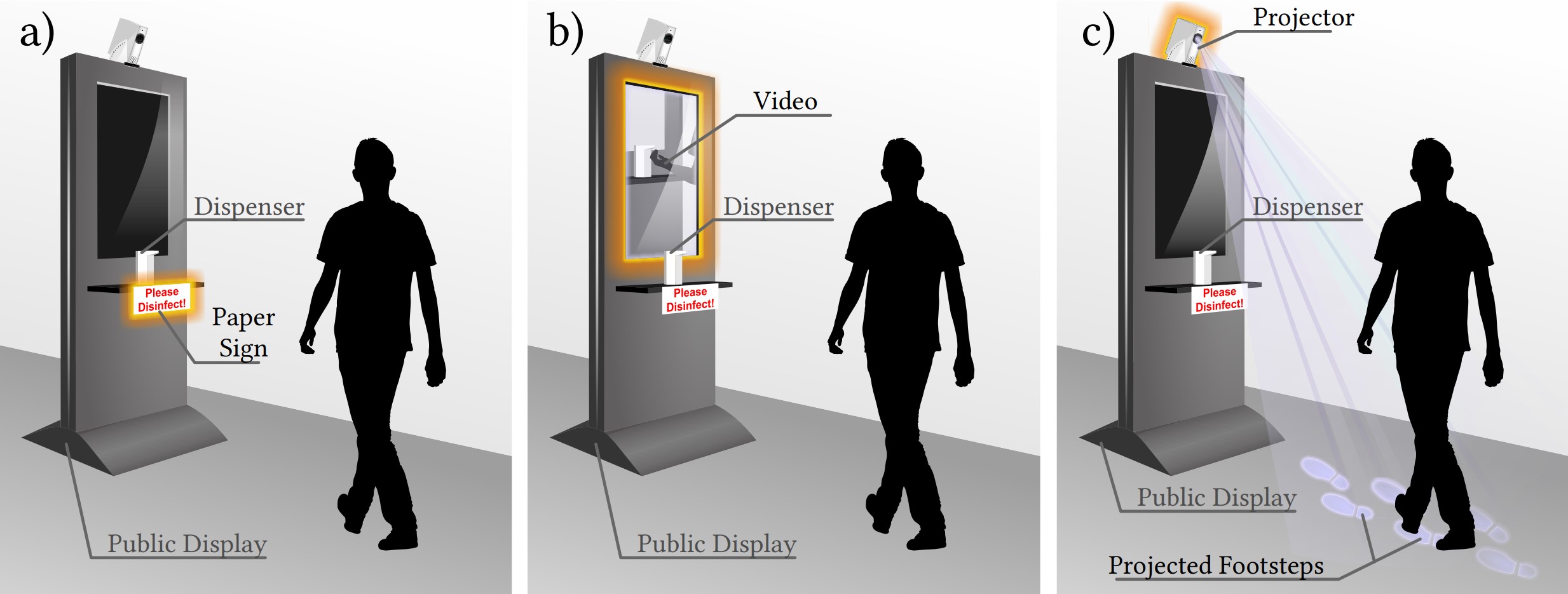Team

Academic Staff
Marvin Strauß, M.Sc.
- Room:
- S-M 204
- Email:
- marvin.strauss (at) uni-due.de
- Consultation Hour:
- nach Vereinbarung
- Address:
- Universität Duisburg-Essen
Institut für Informatik und Wirtschaftsinformatik (ICB)
Mensch-Computer Interaktion
Schützenbahn 70
45127 Essen
Publications:
- Keppel, Jonas; Strauss, Marvin; Haliburton, Luke; Weingärtner, Henrike; Dominiak, Julia; Faltaous, Sarah; Gruenefeld, Uwe; Mayer, Sven; Woźniak, Paweł W.; Schneegass, Stefan: Situated Artifacts Amplify Engagement in Physical Activity. In: Proceedings of the 2025 ACM Designing Interactive Systems Conference, Vol2025 (2025). doi:10.1145/3715336.3735690AbstractDetailsFull textCitation
In the context of rising sedentary lifestyles, this paper investigates the efficacy of “Situated Artifacts” in promoting physical activity. We designed two artifacts that display users’ physical activity data within their homes – one physical and one digital. We conducted a 9-week, counterbalanced, within-subject field study with N = 24 participants to assess the impact of these artifacts on physical activity, reflection, and motivation. We collected quantitative data on physical activity and administered daily and weekly questionnaires, employing individual Likert items and standardized instruments, as well as conducted interviews post-prototype usage. Our findings indicate that while both artifacts act as reminders for physical activity, the physical artifact was superior in terms of user engagement. The study revealed that this can be attributed to the higher perceived presence and, thereby, enhanced social interaction, which acts as a motivational source for activity. In this sense, situated artifacts gently nudge toward sustainable health behavior change.
- Keppel, Jonas; Strauss, Marvin; Zhang, Shuoheng; Stroehnisch, Markus; Lewin, Stefan; Gruenefeld, Uwe; Degraen, Donald; Goedicke, David; Matviienko, Andrii; Schneegass, Stefan: The Impact of Bike-Based Controllers and Adaptive Feedback on Immersion and Enjoyment in a Virtual Reality Cycling Exergame. In: Proceedings of the Extended Abstracts of the CHI Conference on Human Factors in Computing Systems. Association for Computing Machinery, New York, NY, USA, 2025. doi:10.1145/3706599.3720096AbstractDetailsCitation
Cycling exergames can increase enjoyment and promote high energy expenditure, making exercise more engaging and, therefore, supporting healthier lifestyles. To improve player experience in a virtual reality cycling exergame using a stationary bike, we investigated how different input and output techniques affect player engagement. We implemented a bike-based controller integrating button and shoulder-lean steering as input, combined with or without adaptive changes in bike inclination and resistance as output. The results of our study with 24 participants indicate that adaptive modes increase effort and perceived exertion. While button steering provides better pragmatic quality, shoulder-lean steering offers a more hedonic experience but requires more skill and effort. Still, this greater enjoyment fosters higher engagement, particularly when players enter a flow state where the increased physical demands become less noticeable. These findings underscore the potential of bike-based adaptive controllers to maximize player engagement and enhance VR cycling exergame experiences.
- Keppel, Jonas; Strauss, Marvin; Gruenefeld, Uwe; Schneegass, Stefan: Magic Mirror: Designing a Weight Change Visualization for Domestic Use. In: Proc. ACM Hum.-Comput. Interact., Vol8 (2024). doi:10.1145/3698149AbstractDetailsCitation
Virtual mirrors displaying weight changes can support users in forming healthier habits by visualizing potential future body shapes. However, these often come with privacy, feasibility, and cost limitations. This paper introduces the Magic Mirror, a novel distortion-based mirror that leverages curvature effects to alter the appearance of body size while preserving privacy. We constructed the Magic Mirror and compared it to a video-based alternative. In an online study (N=115), we determined the optimal parameters for each system, comparing weight change visualizations and manipulation levels. Afterward, we conducted a laboratory study (N=24) to compare the two systems in terms of user perception, motivational potential, and willingness to use daily. Our findings indicate that the Magic Mirror surpasses the video-based mirror in terms of suitability for residential application, as it addresses feasibility concerns commonly associated with virtual mirrors. Our work demonstrates that mirrors that display weight changes can be implemented in users’ homes without any cameras, ensuring privacy.
- Keppel, Jonas; Strauss, Marvin; Faltaous, Sarah; Liebers, Jonathan; Heger, Roman; Gruenefeld, Uwe; Schneegass, Stefan: Don't Forget to Disinfect: Understanding Technology-Supported Hand Disinfection Stations. In: Proc. ACM Hum.-Comput. Interact., Vol7 (2023). doi:10.1145/3604251AbstractPDFDetailsCitation
The global COVID-19 pandemic created a constant need for hand disinfection. While it is still essential, disinfection use is declining with the decrease in perceived personal risk (e.g., as a result of vaccination). Thus this work explores using different visual cues to act as reminders for hand disinfection. We investigated different public display designs using (1) paper-based only, adding (2) screen-based, or (3) projection-based visual cues. To gain insights into these designs, we conducted semi-structured interviews with passersby (N=30). Our results show that the screen- and projection-based conditions were perceived as more engaging. Furthermore, we conclude that the disinfection process consists of four steps that can be supported: drawing attention to the disinfection station, supporting the (subconscious) understanding of the interaction, motivating hand disinfection, and performing the action itself. We conclude with design implications for technology-supported disinfection.
- Keppel, Jonas; Gruenefeld, Uwe; Strauss, Marvin; Gonzalez, Luis Ignacio Lopera; Amft, Oliver; Schneegass, Stefan: Reflecting on Approaches to Monitor User's Dietary Intake. MobileHCI 2022, Vancouver, Canada, 2022. AbstractPDFDetailsFull textCitation
Monitoring dietary intake is essential to providing user feedback and achieving a healthier lifestyle. In the past, different approaches for monitoring dietary behavior have been proposed. In this position paper, we first present an overview of the state-of-the-art techniques grouped by image- and sensor-based approaches. After that, we introduce a case study in which we present a Wizard-of-Oz approach as an alternative and non-automatic monitoring method.
- Faltaous, Sarah; Janzon, Simon; Heger, Roman; Strauss, Marvin; Golkar, Pedram; Viefhaus, Matteo; Prochazka, Marvin; Gruenefeld, Uwe; Schneegass, Stefan: Wisdom of the IoT Crowd: Envisioning a Smart Home-Based Nutritional Intake Monitoring System. In: Proceedings of the Conference on Mensch Und Computer (MuC). Association for Computing Machinery, Ingolstadt, Germany, 2021, p. 568-573. doi:10.1145/3473856.3474009AbstractDetailsCitation
Obesity and overweight are two factors linked to various health problems that lead to death in the long run. Technological advancements have granted the chance to create smart interventions. These interventions could be operated by the Internet of Things (IoT) that connects different smart home and wearable devices, providing a large pool of data. In this work, we use IoT with different technologies to present an exemplary nutrition monitoring intake system. This system integrates the input from various devices to understand the users’ behavior better and provide recommendations accordingly. Furthermore, we report on a preliminary evaluation through semi-structured interviews with six participants. Their feedback highlights the system’s opportunities and challenges.

